Landscape photography equipment essentials: Come prepared
Sure, having proper equipment on location doesn't guarantee any good output per se, but it definitely helps. The key word here is proper. Unsurprisingly, it is you who can define it best. After all, your gear should suit you, and you alone. Let's begin then.
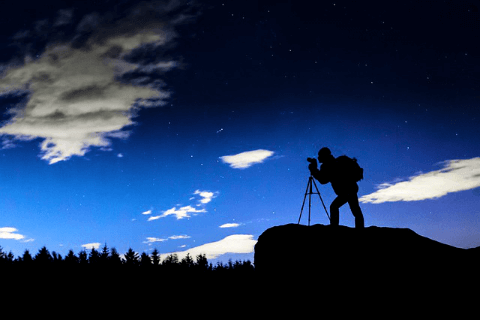 Landscape photography equipment put to work
Landscape photography equipment put to work[Could someone please turn the light on?]
You may want to rotate your phone in order to improve your browsing experience on this site.
This article starts a series which will comprise several instalments. While the information contained here was current when initially published in summer 2016, it might have since become outdated. Be sure to complement it with your own research.
To get started
Choosing your photography kit is an important task. Ultimately, you don't want to be annoyed by peculiarities of your gear again and again, or end up with some busted piece of equipment in the field, miles away from any supplies.
Certainly, some compromises are inevitable. But you need to be aware of them, and sure about their necessity. Just keep this in mind:
A thorough consideration of all factors before you make the final decision and hand over your hard earned cash is vital for your work.
It is that simple.
One more thing: While doing your due consideration, say, reading an online review and – especially – any comments accompanying it, consider only what matters to you. Neither the reviewer nor the commenters are aware of it, nor do they care. You know better.
Photography equipment essentials: Camera
When speaking of photography gear, the first thing to discuss is quite naturally the camera. Choosing one means making a decision with far-reaching consequences.
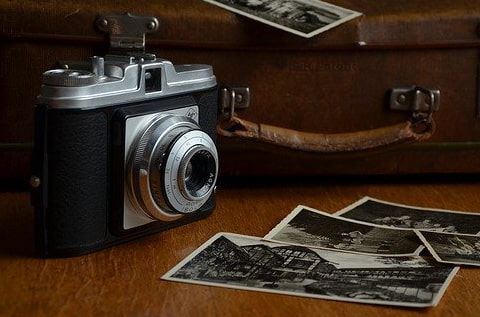
This is especially true for landscape photography equipment. Before committing yourself, you definitely want to ask yourself the following questions and carefully consider the answers:
- Are you going to shoot almost exclusively landscapes, or do you want a versatile camera for all possible subjects?
This is not a silly question. Most if not all camera reviews cater to a vast audience with very different needs and interests. Cameras ranking best in these reviews are inevitably chosen on the ground of their possible appeal to the majority of review readers.
In real life, however, very few buyers will ever use all features which accounted for camera's high evaluation and thus triggered their purchase decision.
In other words, if you are not going to record video or sports, you don't need a fast predictive autofocus in your camera.
If you are not interested in night photography, you won't require your camera's stellar performance at high ISO.
And so on. These features are all nice to have, but having them alone without actually using them will be of no avail to you.
A camera suitable for landscape photography should, in my opinion, first and foremost deliver truthful and detailed colour rendering in natural daylight. High dynamic range is a must, too.
Everything else may count as valid selling points… for others.
Dynamic range describes the ability of a medium to record and represent fine shadow gradations. The more different shadow levels are discernible in the resulting image, the higher is its dynamic range. The concept traces back to the zone system defined by Ansel Adams and Fred Archer.
- Can you work with a single fixed lens, or do you need the ability to change lenses on your camera? If you are positive about the latter, are there quality lenses available for your desired camera build in your preferred focal range?
There are undeniable advantages to an SLR or a mirrorless system camera, with greater versatility — again — being the biggest.
But nothing comes without a cost. In order to benefit from this advantage, you'll need to bring several lenses on location and carry them along all the way.
SLR cameras alone can be rather bulky and relatively heavy. Add a couple of quality glass lenses, a tripod with a coupling, and you may face some serious logistic problems with all that stuff.
On the other hand, fixed lenses are generally well adjusted to work with their respective sensors. Cameras which use them are often cheaper, smaller, and lighter than their system counterparts.
If you are sure to spend 95% of your time working with a single focal length, a suitable fixed lens camera can be right for you.
Some manufacturers offer several models with different fixed lenses, so when you do need an alternate focal length, you can invest in a similar camera attached to another lens.
Admittedly, this doesn't look like the best – or the cheapest – solution, but it just may work for you in your particular situation.
Besides, having a fixed-lens camera with you as your fallback system may prove like a smart move should you really require one.
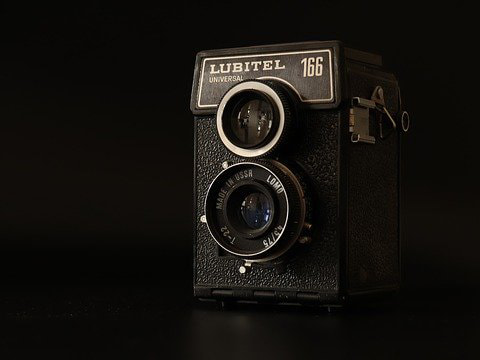
- How do you plan to use and present your images, i.e., how big do you need them?
Along with the maximum sensor resolution, both its size and format, or aspect ratio, account for this.
To look good in print, images of all sizes can be securely scaled to match the resolution of 300dpi.
When this secure print size is big enough to allow comfortable viewing from a distance, print resolution can be reduced as viewers' eyes will be unable to make out small imperfections in the printed image caused by its lesser resolution.
For example, a 24MP image with a 3:2 ratio, that's 6,000 x 4,000px, will securely print at (6,000px / 300dpi =) 20", or close to 51 cm, wide.
While this is by no means huge, you would probably be able to blow the image up a little, say, to 25" printed at 240dpi. Depending on the subject, even a 30" (76 cm) print with 200dpi may be manageable.
On the other hand, a 24MP image with a 4:3 ratio, or 5,640 x 4,230px, will securely print at only 18 3/4", short of 48 cm, wide. At 200dpi, the image will only grow to become 28" (71 cm) wide.
It's whole two inches smaller just because of the slightly different sensor format. - How challenging do you expect your shooting conditions to be? Will they require the camera body to be environmentally sealed? Will you have to carry all your gear for long distances and/or in rough terrain?
If you are going to take pictures in wet, dusty, or cold conditions, your camera body be better prepared to take it hard.
If you plan to bring your photography equipment along on mountain tours, do consider its overall weight, and also choose your lenses and tripod with respect to this.
- How much do you want to spend?
This is not a catch question. Cheap may have its merits, but in general, you get what you pay for.
In this respect, if you want to pursue photography as a trade, I would advise that you spend as much money on your photography equipment as you can afford at any given point in your career.
If you are on a tight budget, the introduction of a new camera model is a great opportunity to save on dropping prices of its predecessor still in stock at retailers.
Photography equipment essentials: Lenses
Your lens is hands down your most important piece of gear. A high-quality lens will produce top pictures even on an average camera body.
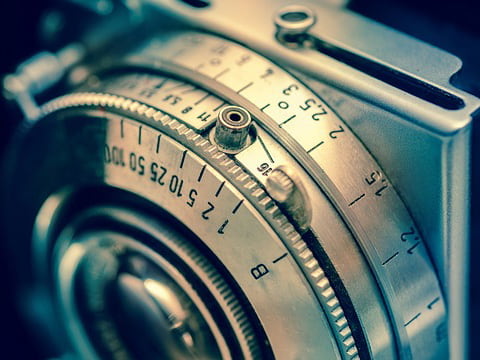
A poor lens, on the other hand, will ruin the effort from the best camera in the world it is attached to.
A photography lens is a complicated physical device with many features and characteristics well worth the time for a dedicated discussion.
Follow the links for detailed explanations on lens physics, their quality features, and recommended lenses for landscape photography.
Equipment essentials: Accessories
This topic is arguably not that essential compared to the choice of your camera and lenses. Still, questions about it will rise rather sooner than later on your photography journey.
First of all, you will want to decide on how to carry all your photography stuff around when you are on the road — the answer is of essential urgency for any landscape photographer.
Like everything else, this very much depends on your circumstances. A shoulder carry case which can accommodate a mid-size camera body with two decent lenses is probably the most versatile solution.
If your model would allow wearing the case on a belt around your waist, even better.
For anything bigger and heavier, a backpack would be a more suitable, if also a quite cumbersome, solution.
In any case, you will have to think about protecting your valuable equipment against the elements, and choose your photography bag based on that, too.
Depending on your habits and work preferences, you may want to invest in a good tripod.
Its stability, weight, compactness, and ease of handling are all of equal importance. A professional tripod made of carbon fibre can be of invaluable help on location, but does come at a cost.
If working from a tripod, don't forget some sort of remote release. And if not, consider a monopod which will also work as a handy hiking pole when you need one.
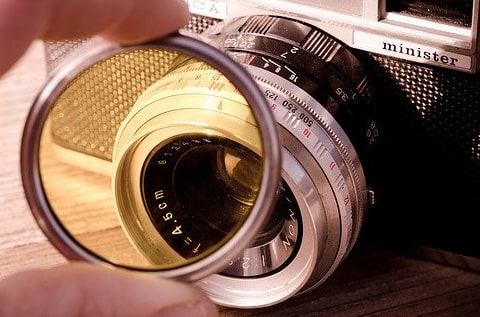
Finally, a landscape photographer can make use of several photography filters which I discuss in a separate article.
* * *
Now that we boiled down the essential questions, read on for some possible answers!
Tags: #landscapephotography #photogear #phototips
Unattributed images on this page are sourced from public domain via Pixabay.
More on landscape photography equipment
- Cameras best suited for landscape photography
- Following the thread about what is most important for landscape photography equipment, let's discuss some worthwhile options.
- Landscape photography ♥ panoramic cameras
- Ever wanted to try one? Read about your current options!
- How to choose a camera lens
- Everything you need to know when looking for a new camera lens, in one place: manufacturers, mounts, formats, types, and how to understand all those mystic lens labels.
- Understanding digital camera lenses – and their reviews
- Understand how to tell good digital camera lenses from the rest when reading their reviews.
- Best camera lenses for landscape photography
- The last article on camera lenses presents some fine choices for selected cameras.
- Filters for landscape photography
- Learn how to use most useful landscape photography filters!
- Polarising filter
- One of the most striking photography filters available is hard to imitate and easy to master. Try it!
Other photography tips
- Landscape photography composition tips
- Your mastery of photography composition is what ultimately makes your images. Read here how to excel at it in order to engage your viewers!
- Black & white landscape photography
- Black-and-white photography is very much alive, and landscapes in black and white still look as stunning as in Ansel Adams's day. Be sure to check the article if you'd like to try your hand at this classic and fascinating technique.
- Landscape photography equipment essentials
- Looking for a new camera or another piece of gear? Find answers to your questions, along with some advice and recommendations!
- Fine art photography prints
- And now for something completely different… My thoughts and advice on choosing and using fine art photography prints.
- How to photograph waterfalls
- If your waterfall images are not up to the expectations of your friends, nor to your own satisfaction, try these easy to follow tips to make them shine!
- Marketing fine art photography
- This newsletter issue is about creating your brand and marketing your work, told by those who've been there and done exactly that.
- What is legal to photograph outdoors
- Ever thought about copyright laws having two sides? Your photography can violate them, too. Be sure to know what to photograph, where without getting into trouble.
- How to use Photoshop
- In a dedicated newsletter issue, join me as I show how I use Photoshop to edit my images, and learn some funny facts about the application while at it.
- Wildlife photography tips
- No purchase necessary: Learn how to photograph wildlife for best possible results with your usual equipment.
- Art seascapes
- As November closes in, we take Ishmael's, of Moby Dick, advice and get to sea as soon as we can, led by some highly inspirational examples.
- Winter landscape photography tips
- "Winter landscape" may not sound as exciting as, say, "summer beach", not to everybody, for sure. But if it does to you, there is much to discover outdoors in this time of the year, too. Dress warmly and come on outside!
- Best Adobe Photoshop tips
- We recall some Photoshop basics, like layers, and proceed with more advanced topics, like masks, selective channel editing, converting colour to black and white, and output sharpening.
Landscape photography equipment resources
- Digital Photography Review
- In business since 1998, this is the place to go for latest news, reviews, and discussions on digital photography equipment. They got it all. Remember to take every comment only for what it is, and not too seriously.
- Photozone
- An extensive camera lens review database.
- DxOMark
- Very technically oriented tests and reviews of camera sensors and camera-lens combos. Not easy to navigate, but if you need some numbers to support – or overturn – your choice, you will find some here.
Tell me what you think!
Is it useful 👍? Awful 👎? Leave a message! Your comments help make this site better (and give me a kick—one way or another).
Popular articles
-
A kind of magic
If a digital picture has to be seen in the real world, printed on a real medium and displayed in a real showcase, its transition from RAW to real is better done in an old school image editor. Enter A…
-
A duck for a dog
If you got your own place on the Internet, helping your visitors find what they are looking for is a great way to engage them and keep them staying a bit longer. A custom site search can achieve just …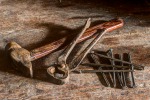
-
"Might as well have the best"
Aiming for better images? Think better lenses! This is your most important piece of gear, so you better get it sorted out. — Need some advice?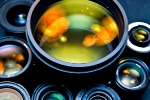
 Become a patron for
Become a patron for